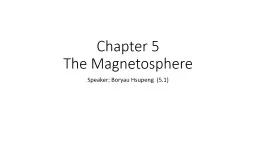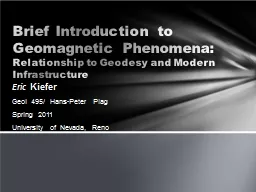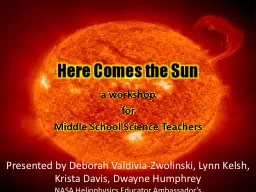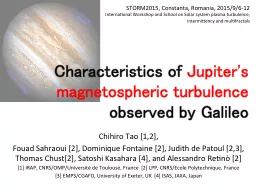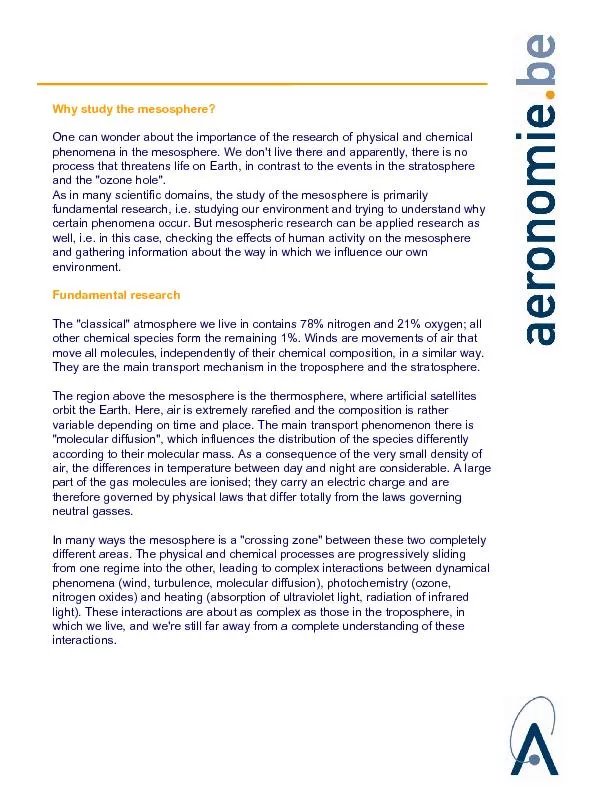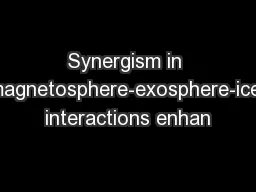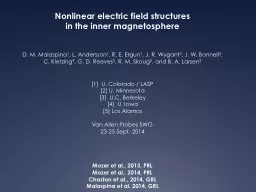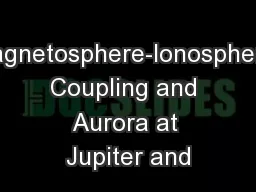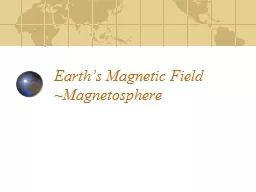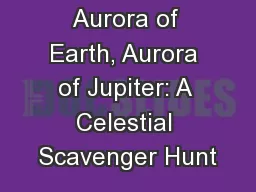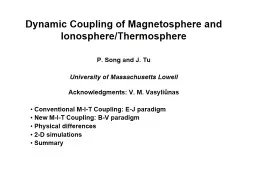PPT-Chapter 5 The Magnetosphere
Author : funname | Published Date : 2020-10-06
51 Boryau Hsupeng 徐彭伯堯 52 Zhong You Sun 孫忠佑 53 HuaShan Shi 施驊珊 54 ZhengXian Chen 陳政憲 51 Solar Wind Magnetosphere Interaction 511 Structure
Presentation Embed Code
Download Presentation
Download Presentation The PPT/PDF document "Chapter 5 The Magnetosphere" is the property of its rightful owner. Permission is granted to download and print the materials on this website for personal, non-commercial use only, and to display it on your personal computer provided you do not modify the materials and that you retain all copyright notices contained in the materials. By downloading content from our website, you accept the terms of this agreement.
Chapter 5 The Magnetosphere: Transcript
Download Rules Of Document
"Chapter 5 The Magnetosphere"The content belongs to its owner. You may download and print it for personal use, without modification, and keep all copyright notices. By downloading, you agree to these terms.
Related Documents

